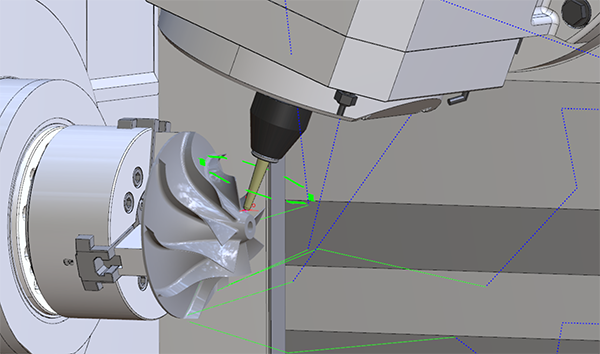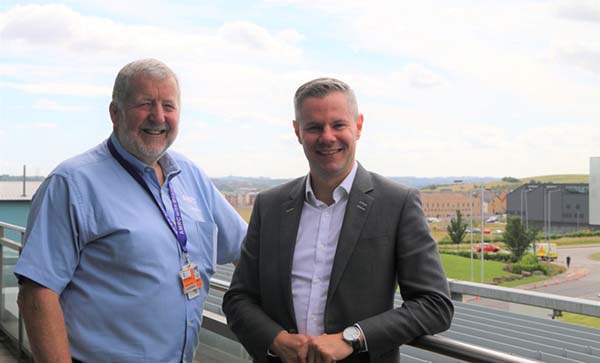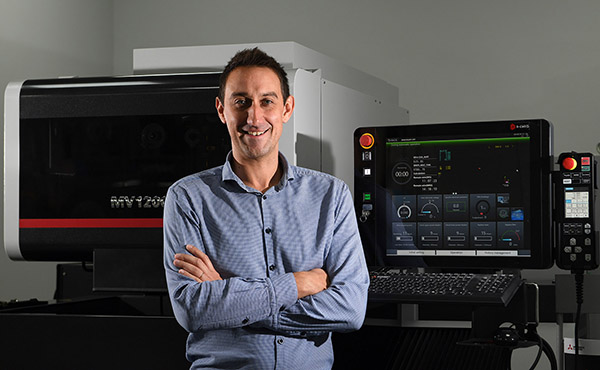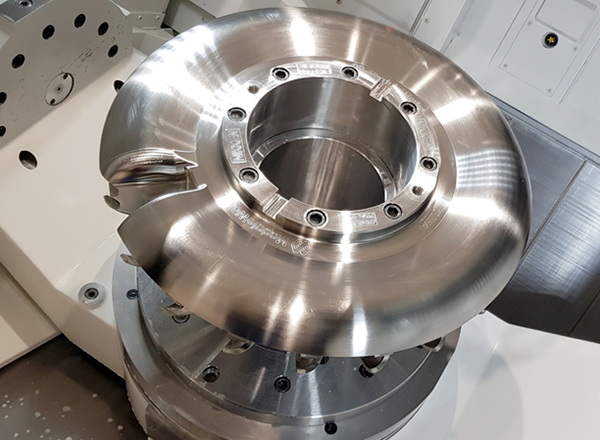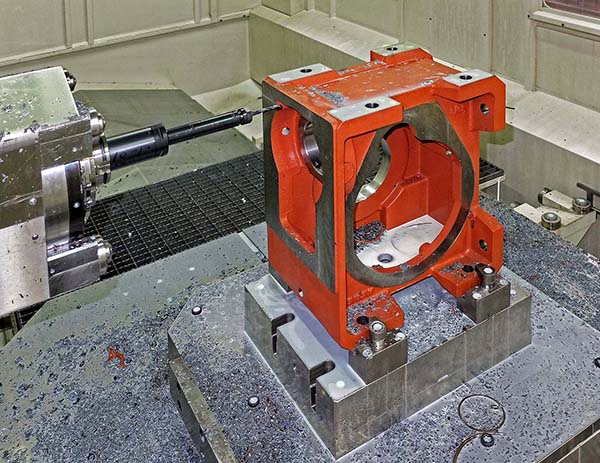Replacement of an ageing, single-table, horizontal-spindle machining centre with a new, German-built Burkhardt + Weber (BW) twin-pallet model supplied by UK agent, Kingsbury, has revolutionised the machining of industrial gearbox casings at Rochdale-based Renold Gears. The gearbox casings are produced mainly from iron castings and fabrications, but also from steel and aluminium.

The resulting savings in floor-to-floor times of between one-half and two-thirds are due to increased metal removal rates during cutter engagement, significantly reduced non-cutting times through faster axis movements, fewer operations due to better fixturing methods and faster component changeover through offline set-up on the second pallet.
Furthermore, with the twin-pallet configuration, if there is an issue during the machining of a component it can be brought out of the working area for inspection, allowing production of the next part to commence. Such troubleshooting would have resulted in a lot of unproductive time on the previous machine.
Renold’s gearboxes are large prismatic components that can measure more than 2 m in height and weigh up to 3 tonne. Around 20% of the products manufactured are standard, with the remainder being customer-specific designs that are produced in quantities of between one-off and 30-off per month. Fast, flexible machine tools are needed to produce such relatively low batch sizes in a cost-effective manner and allow the manufacturer to compete in world markets.
When the company’s CEO was appointed in 2013, he instigated modernisation initiatives that started with the factory infrastructure. A programme followed of drive and control retrofits and mechanical upgrades to what are fairly specialised machine tools, such as worm screw and wheel production centres.

Three years later, the company’s production workers were asked which machine on the shop floor they would most like to replace, and the large horizontal machining centre was almost unanimously chosen. By then, this machine’s unreliability was resulting in sometimes having to outsource machining to meet production deadlines. After several twin-pallet HMC options had been considered, the decision was taken to purchase a BW MCX 1400 with a 3200 by 2200 by 2000 mm working volume and B-axis NC table.
A senior manufacturing engineer at Renold Gears says: “During trials, the BW machine proved capable of more than halving the cycle times on the old HMC, and was also more productive than the other four-axis machines with pallet changers that we considered. We gave two test parts to each potential supplier: a gearbox casing for a heat exchanger and another for an escalator drive. On average, they were machined around 15% quicker on the MCX1400.”
Key elements of the machine specification that deliver this high productivity are acceleration of up to 5 m/s² to rapid traverse speeds of 60 m/min, and a 60 kW/3500 Nm/5000 rpm spindle with HSK-A100 interface.
The engineer at Renold Gears adds that other factors favouring the chosen machine were its availability on short delivery, as well as its ergonomic design, which promotes safety when personnel approach to access the working area or carry out servicing while it is running. Additionally, the 180-pocket tool magazine (extendable to 330) is helpful, as a large number of cutters are needed to cope with Renold’s wide range of gearbox casing sizes and materials. A majority of these tools can be permanently resident in the magazine.
Drawing tolerances are tight for such large components, down to 20 µm in total for certain machined features like gear centres and shaft bores, some of which are produced by interpolation milling. The reliability and repeatability with which this level of accuracy is achieved on the MCX 1400 means that downstream benefits are experienced in the metrology department. CNC inspection is faster, as it requires less comprehensive routines and fewer components need to be checked.

Kingsbury prides itself on providing a production solution rather than a machine tool. While the BW installation at Rochdale was not what the supplier would class as a full turnkey project with tooling and fixtures, which Renold provided itself, it nevertheless entailed significant early support.
Initial test programs were converted directly into cycles for production parts covering two families of casing, while further programming support was provided along with on-site operator training. Service is carried out by Kingsbury’s own engineers via the company’s divisional LPM (Large Prismatic Machines) offices in Warwick.
The engineer at Renold Gears concludes: “We’ve also been migrating the machining of our custom gearboxes and some standard product across to the BW machine to take advantage of its high productivity. It already does the work of the old horizontal machining centre and another machine, and we’re looking to consolidate jobs on the BW that we currently put on a third machine. Once a process is in place on the MCX 1400, it eats the work.”
For further information www.kingsburyuk.com







